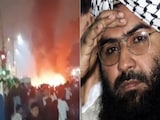- Vijay Sakhare is leading a 10-member NIA team probing the Delhi blast
- He has previously served as the Inspector General in the NIA
- Sakhare was appointed as the NIA DG in September this year
Vijay Sakhare, the Director General of National Investigation Agency (NIA), will be leading a special 10-member team to probe the blast near Delhi's Red Fort Metro Station in which nine people died. The team comprises of Inspector General of Police (IG), two Deputy General of Police (DIG), three Superintendent of Police (SP), and the remaining are DSP-level officers.
The agency will take possession of all case diaries of the Jaish module from the Jammu and Kashmir Police, Delhi Police, and Haryana Police to uncover its operational capabilities and financial support. More than 1,000 CCTV footages are being scanned by investigative agencies. They are also monitoring social media activity and collecting mobile phone data from several locations across Delhi.
Who is Vijay Sakhare?
Vijay Sakhare is a 1996 batch Kerala cadre officer. He has previously served as the Inspector General in the NIA.
Sakhare was appointed as the NIA DG in September this year.
He held a meeting with the Intelligence Bureau (IB) chief today, sources said.
The Delhi blast case was handed over to the NIA on Tuesday after Union Home Minister Amit Shah took stock of the investigation. The incident occurred on Monday at 6:52 pm - on a day when massive 2,900 kg of explosives, including ammonium nitrate, were found in Haryana's Faridabad. Sources said that the suspected suicide bomber, identified as Umar Mohammad, may have panicked and triggered the blast after investigators arrested two key members of the module - Dr Muzammil Shakeel and Dr Adil Rather - and seized the explosives.
An initial assessment of the blast site also indicated the suspects may have panicked and made a mistake while carrying the explosives, top intelligence sources told NDTV. More evidence pointed towards an accidental explosion as there was no blast crater formation and the absence of projectiles at the site.















